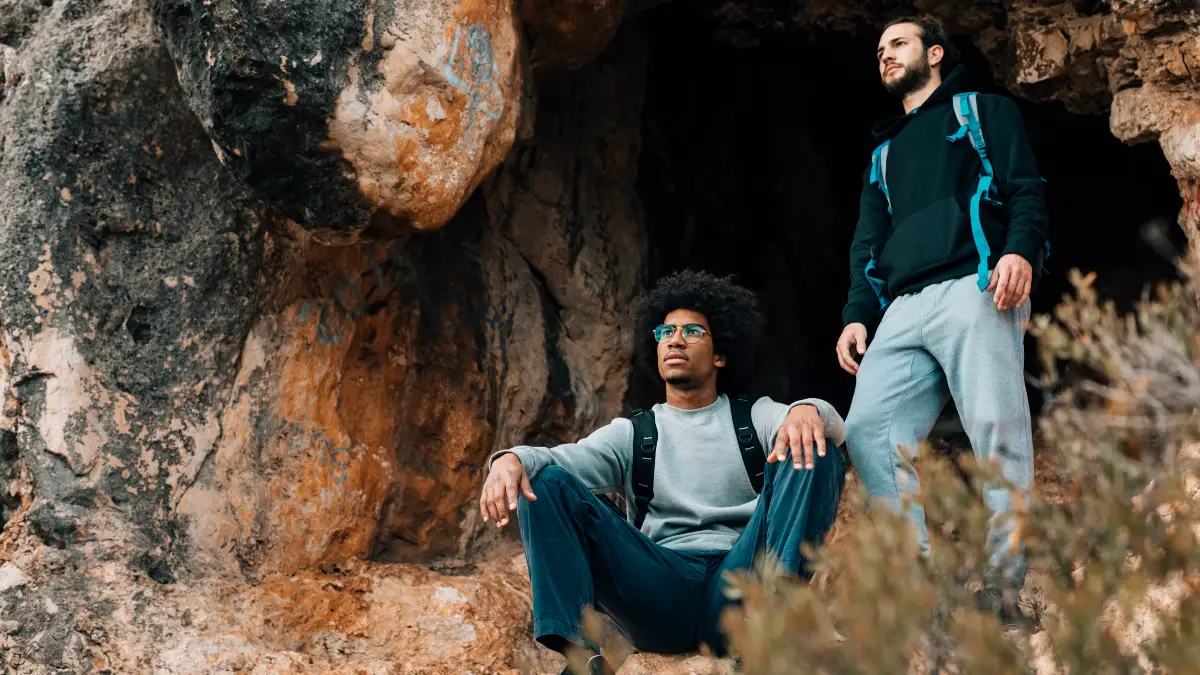The Grand Canyon is one of the world’s greatest natural disappointments. Millions of people journey to its rim expecting a life-changing moment, only to leave feeling strangely empty.
They snap a few photos of a view that feels surprisingly flat, a massive landscape that fails to connect. The problem is not the canyon. It is the approach. The vast majority of visitors make a fundamental error that turns one of the planet’s most dynamic places into a static postcard.
They arrive unprepared for its scale, its demands, and its true character. This mistake is so common it has a timeframe: just 17 minutes.
This guide is about escaping that fleeting, unsatisfying gaze. It will show you why that quick look fails and how to truly experience the canyon’s profound depth.
The “17-Minute Gaze”: Why a Quick Look Guarantees a Letdown
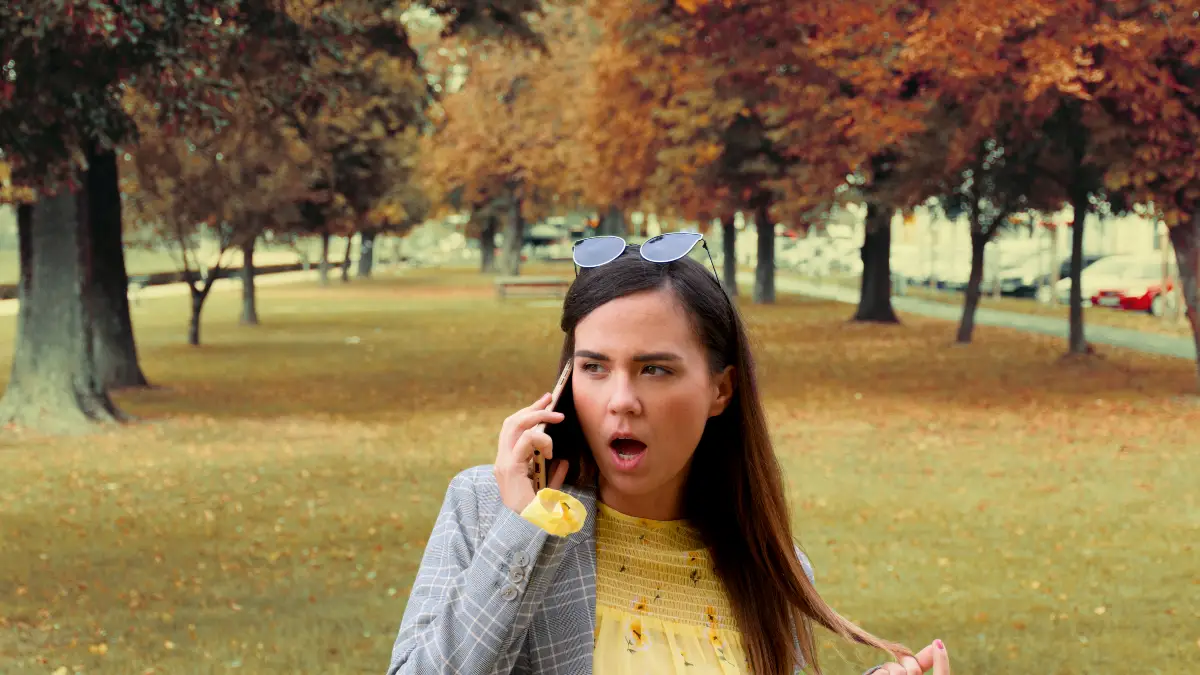
Why do so many people feel let down by the Grand Canyon? It’s one of the most amazing places on Earth. But online, people often say they got bored or that “the view was pretty much the same from every viewpoint” after a few hours.
This isn’t the canyon’s fault. It happens because of a big mistake in how people approach it. The number one mistake isn’t about forgetting water or wearing the wrong shoes, though those are common problems.
The biggest mistake is treating the Grand Canyon like a flat postcard to look at, instead of a real world to experience.
The average person spends just 17 minutes looking at the canyon. This “17-minute gaze” is the perfect example of the postcard view—a “snap-and-go” way to see one of the oldest and most amazing landscapes on the planet.
Your brain has a hard time processing how huge the canyon is from a single spot. It can look flat, like a painting, without the depth that makes it feel real. This is why just looking from the rim often feels unsatisfying.
The Grand Canyon is not just a silent picture. It is a living place with its own weather, rocks that go back 1.8 billion years, and a deep quiet that is an experience all by itself. It’s a place of depth, sound, and feeling that you can’t get from far away.
This basic mistake—the postcard view—is the reason for almost every other planning and safety problem that can ruin a trip. You don’t need to book a hotel a year early for a postcard.
A postcard doesn’t have two-hour traffic jams. It doesn’t have a 5,000-foot drop with a 30-degree temperature change from top to bottom. When you see the Grand Canyon as just a picture, you set yourself up for a string of problems. This can lead to frustration and even danger, making sure your trip ends in disappointment.
3 Ways the Postcard View Ruins Your Trip
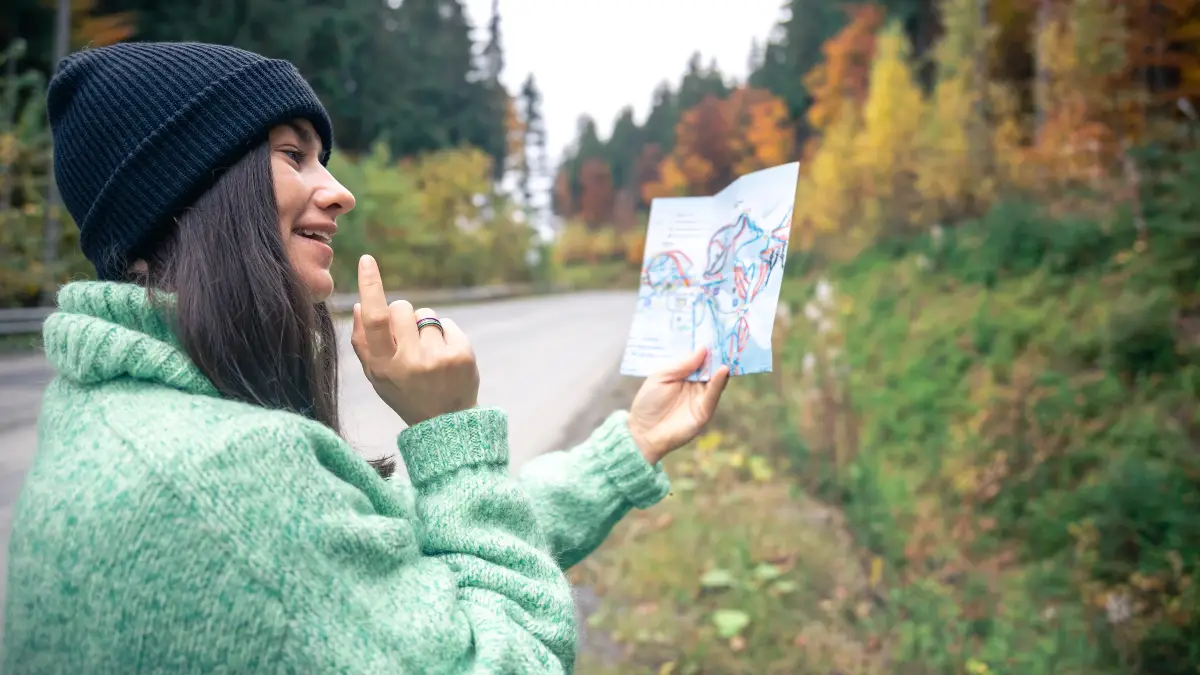
Thinking of the canyon like a postcard shows up in three clear ways that ruin a trip. These problems are all connected and come from the same flawed way of seeing the park.
This turns what should be an amazing trip into a frustrating and shallow experience.
1. You Can’t Just “Show Up”
The most common wrong idea from the postcard view is that you can simply “wing it” at the Grand Canyon. For a park that gets nearly 5 million visitors every year, this is a recipe for disaster.
Showing up without a plan doesn’t give you freedom. It just means you’ll wait in long lines and miss out on the best parts.
The proof is clear and easy to see. If you arrive at the popular South Entrance between 10 a.m. and 4 p.m., you should be ready for waits from 45 minutes to two hours.
Once you’re inside, the planning problems continue. The main parking lots near the Visitor Center are usually full by 12 noon. This forces you to drive around looking for a spot or park far from the main sights.
The dream of staying in a historic lodge on the rim is impossible if you just show up; those places are often booked solid six months to a year in advance.
These planning problems have a bad effect on your whole visit. You waste hours in traffic or looking for parking, which causes stress.
This pushes you into a rushed, “checklist” mode, where the goal is just to see the main viewpoints before you have to leave. You get stuck in the most crowded spots at the busiest times of day, sharing the view with thousands of others who made the same mistake.
The park’s best experiences—like a cabin at Phantom Ranch at the bottom of the canyon or a room at the historic El Tovar Hotel—require planning 13 to 15 months ahead. This system rewards people who plan.
By making you plan so far ahead, it makes sure that the people who get the best experiences are the ones who have already beaten the postcard mentality.
2. All the Views Start to Look the Same
A common thing disappointed visitors say is that “all the views look the same.” This feeling of “scenery burnout” happens because you only see the canyon from a few easy-to-reach and very crowded viewpoints, like Mather Point and Yavapai Point.
When you see the canyon from similar angles in the same light, you miss the small details that make it special.
The midday sun makes this problem worse. The harsh, overhead light makes the canyon’s features look flat. It gets rid of the deep shadows that show the shapes of the buttes and temples, which give the landscape its feeling of depth.
The bright reds, oranges, and purples of the rock layers get washed out, making it all look the same.
The fix for this is to see how the canyon changes. You need to see it from different places and at different times of day.
The viewpoints along Hermit Road, which you can get to by a free shuttle, offer a very different view from the overlooks along Desert View Drive. More importantly, seeing the canyon during the “golden hours” of sunrise and sunset is a game-changer.
As the sun’s angle changes, the light paints the canyon walls, showing new colors and a sense of depth that you can’t see at noon.
To avoid the parking stress that can stop you from seeing this, use the park’s free shuttle bus system. The Red Route provides the only vehicle access to Hermit Road and its less-crowded sunset spots like Hopi or Mohave Points for much of the year.
3. You Never Hike Below the Rim
Maybe the biggest missed opportunity—and the clearest sign of the postcard mentality—is not hiking even a short distance below the rim.
People who know the canyon all agree on this: “you haven’t really seen it until you’ve hiked down into it.” The moment you step onto a trail and start to go down, the experience completely changes.
The sense of size, which is hard to grasp from above, becomes real. The temperature shifts, the sounds of the rim fade away, and the huge rocks are no longer a faraway view but a real place you can touch. You are transformed from someone who just watches the canyon to a part of it.
People often hesitate to go below the rim because they are scared of the dangers, and for good reason.
Grand Canyon National Park is number one for search and rescue (SAR) incidents among all U.S. national parks.
This huge number of rescues happens because visitors underestimate how tough the canyon really is—a classic sign of the postcard mentality. They see a trail going down from the rim and think it’s a simple walk, not thinking about the harsh reality of the place.
The two most important things are elevation and temperature. The hike back up to the rim is tough and usually takes twice as long as the hike down.
This is made worse by a big temperature difference; a nice 70°F day on the South Rim can be a dangerous 110°F or higher on the canyon floor. This is why heat sickness and injuries are leading causes of SAR calls.
These facts are not just safety numbers; they show the results of the postcard mentality. As one of the canyon’s top SAR rangers, Bil Vandergraff, says, the biggest problem is not that people’s bodies fail, but that their minds give up.
“What we deal with more than anything is people who say they can’t,” he says. “Their brain has shut down.” This mental shutdown happens because of a physical shock—the shock of realizing the “picture” is a very hard, high-altitude desert hike.
But you don’t need to do a dangerous hike to the river to experience the canyon from below. A short, well-prepared walk on a main trail offers a view that changes everything.
A 1.8-mile round-trip hike to Ooh Aah Point on the South Kaibab Trail or a short walk to the first tunnel on the Bright Angel Trail is enough to completely change how you see the canyon, offering amazing views and a true sense of its size.
How to Plan the Perfect Grand Canyon Trip in 2025
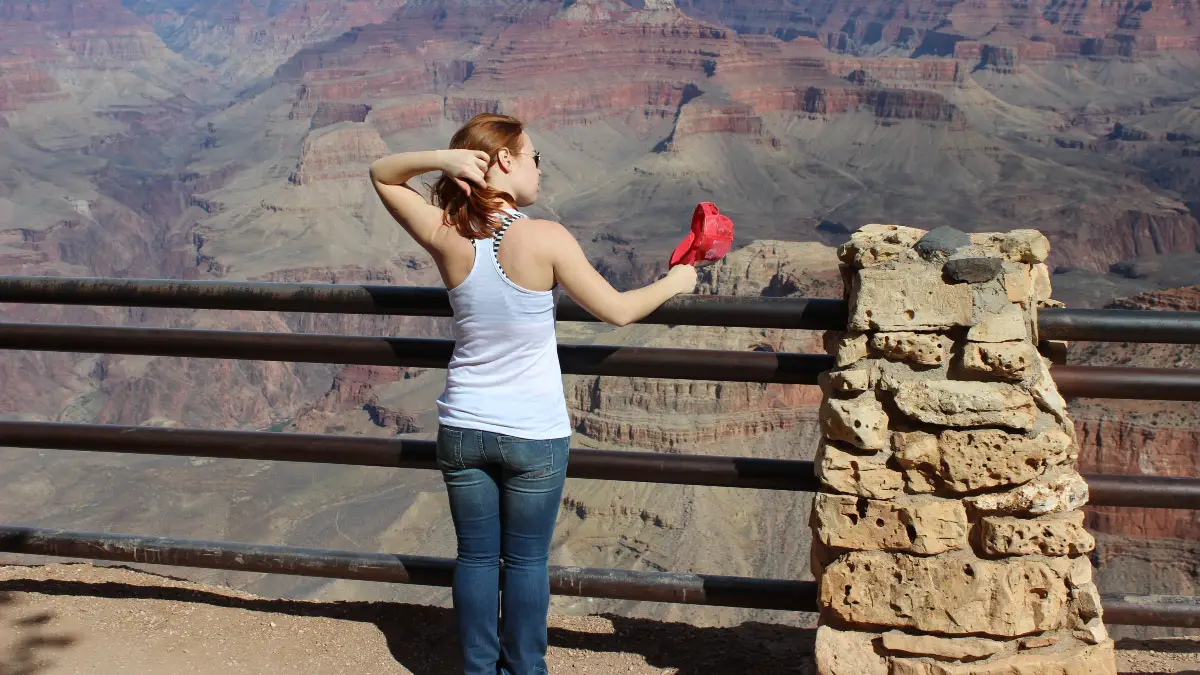
To avoid the #1 mistake, you need to change your thinking from just showing up to planned exploring. This timeline is your step-by-step plan for a successful and amazing Grand Canyon visit in 2025 and beyond.
13-15 Months Out: Book Your Main Event
The first and most important step in beating the postcard mentality is to plan far ahead. The park’s most unique and best experiences are in high demand and require booking more than a year in advance.
Booking one of these “main events” not only guarantees a highlight for your trip but also makes you think more about the park’s details from the very beginning.
The booking times for lodges, backcountry permits, and the popular Phantom Ranch are in the table below. It gives you a clear plan for 2025-2026.
| Experience/Lodging | Booking Window | How to Book (System) | Key 2025-2026 Dates & Notes |
| Phantom Ranch Cabins | 15 months prior | Lottery via GrandCanyonLodges.com | Lottery for a January 2027 stay opens Nov 1-25, 2025. Dorms are closed for now. |
| Backcountry Camping Permit | 4 months prior | Lottery via Recreation.gov | For a May 2026 trip, enter the lottery between Dec 16, 2025, and Jan 1, 2026. It’s free to enter; you pay if you win. |
| South Rim Lodges (El Tovar, Bright Angel, etc.) | 13 months prior | Rolling, 1st of the month via GrandCanyonLodges.com | On January 1, 2025, booking opens for all of January 2026. A full month opens at once. |
| North Rim Lodging/Camping | SEASONALLY CLOSED | N/A | The North Rim is closed for all of the 2025 season due to fire damage. It is set to reopen with limited access from Oct 1 – Nov 30, 2025. |
3-6 Months Out: Plan Your Schedule
Once your main event is booked—or you’ve decided to stay in a nearby town like Tusayan or Williams—the next step is to build the outline of your trip. This is the time to book rental cars and flights, which are often cheaper when you book a few months early.
This is also the best time to decide which season fits your style. The shoulder seasons of spring (March-May) and fall (September-October) are often called the best times to visit.
They offer nice temperatures for hiking and smaller crowds than the summer. Summer (June-August) is very hot, especially in the canyon, and has the biggest crowds, so you’ll need a lot of patience.
Winter offers a special and magical experience, with snow on the canyon rims and the fewest visitors, though the North Rim is closed and trails can be icy.
Finally, decide how long you will stay. While any visit is better than none, a single day trip often feels rushed and stressful.
You should stay at least one overnight to see both a sunset and a sunrise, which is when the canyon looks its best. An ideal visit is two nights (three days).
This allows for a more relaxed pace, a short hike below the rim, and time to see viewpoints along both Hermit Road and Desert View Drive without feeling rushed.
1 Week Before: Pack and Get the App
In the final week before your trip, focus on packing and getting final information. The key to a comfortable trip is packing layers.
Weather in the high desert can change quickly, and the temperature difference between the rim (at 7,000 feet) and the inner canyon is large.
Things you must have include well-worn hiking shoes (never new ones), a wide-brimmed hat, sunscreen, salty snacks, and a reusable water bottle to use at the park’s filtered water stations.
Your most valuable tool will be your phone, with the right apps and websites. The official National Park Service (NPS) App is something you need.
Its most important feature is that you can download park maps, trail information, and hours for offline use. Since cell service in the park is spotty and not reliable, this feature is a must-have for getting around.
Before leaving home, do a final check on the official Grand Canyon National Park website (NPS.gov/grca). This is the best place for last-minute alerts about road or trail closures, the status of water pipelines on the trails, and any fire rules that might be in place.
Your First Day: A 5-Minute Plan for Success
Success on your first day at the Grand Canyon depends on the first decision you make: when to arrive. The golden rule is to be at the South Entrance gate before 9:30 a.m. This lets you avoid the worst traffic and get a parking spot before the lots fill up.
When you arrive, use the “park once, ride the shuttle” plan. Park your car at one of the big lots near the main Visitor Center (Lots 1-4) and use the park’s free and easy shuttle system for the rest of the day.
This one action gets rid of the stress of finding parking at each viewpoint and saves a huge amount of time.
A good plan for your first day might look like this:
- Morning (9 a.m. – 12 p.m.): After you park, take a nice walk east on the paved Rim Trail from Mather Point to the Yavapai Geology Museum. The museum’s big windows have great views, and the displays give you important facts about the rock layers and history you are seeing.
- Afternoon (1 p.m. – 4 p.m.): Get on the Red Route shuttle bus, which runs along Hermit Road. This beautiful drive is closed to private cars for most of the year. Get off at a few viewpoints, like Hopi Point and The Abyss, to see the changing views of the western canyon.
- Sunset (5 p.m. onwards): Stay on the Hermit Road route for sunset. The viewpoints at Mohave Point or Pima Point are usually much less crowded than those near the Village and offer amazing, clear views of the setting sun over the canyon.
3 Things to Do That Most People Miss
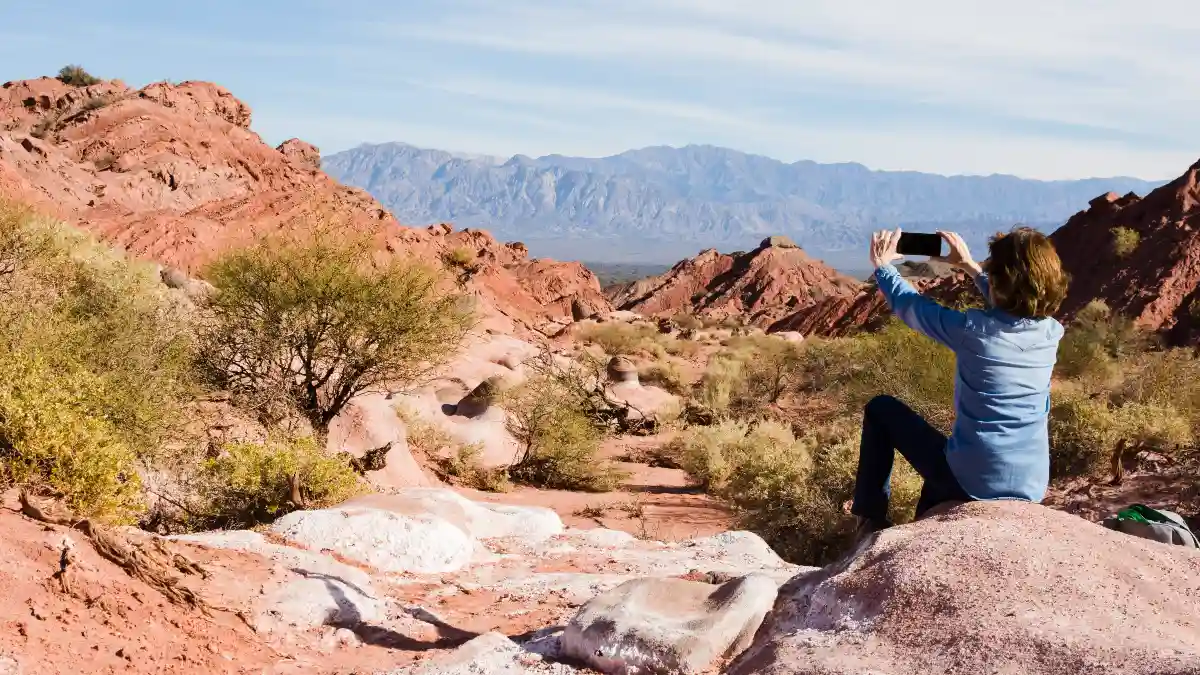
To really feel the Grand Canyon and get past the shallow “postcard” experience, look for things that give you more meaning and a different way to experience it. Most visitors, who are in a rush, miss these simple yet powerful activities.
Go to a Ranger Program:
The National Park Service offers free, daily programs led by park rangers. These talks, walks, and evening shows cover topics from geology and fossils to the history of the Ancestral Puebloans and the canyon’s special wildlife.
Going to one of these programs gives you a story that makes every view better afterward. You can find schedules at the Visitor Center and on the NPS app.
Hear from the First Voices:
The Grand Canyon is not just a big hole in the ground; it is an ancestral home. The park’s Cultural Demonstration program, often held at the Desert View Watchtower, gives you a powerful chance to connect with this living history.
You can meet artists and cultural guides from the 11 tribes connected to the canyon, watch them make traditional crafts, and hear their stories about the canyon. This experience changes how you see the place from a simple park to a sacred, cultural space.
See the Canyon After Dark:
As an official International Dark Sky Park, the Grand Canyon has some of the most amazing night skies in the United States.
After the sun sets and the day-trip crowds leave, the park changes. On a clear, moonless night, the Milky Way stretches across the black canyon in amazing detail.
Ranger-led stargazing programs are offered often, but even finding a quiet spot along the rim away from the village lights gives you an unforgettable view of the stars. A red light flashlight is a good idea to keep your night vision while moving in the dark.

